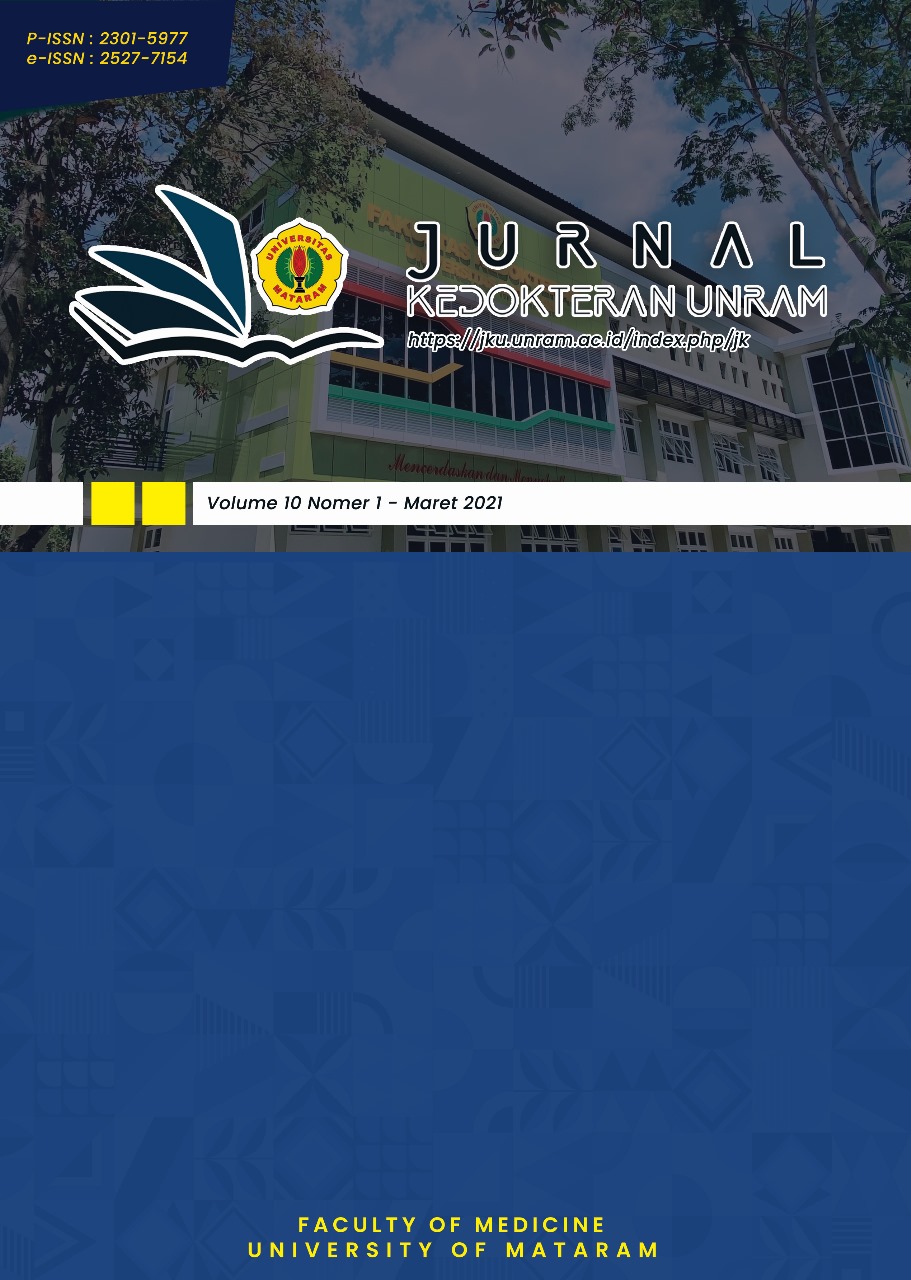Oral Citicoline and Diabetic Retinopathy: Effects on Macular Ganglion Cell Layer Thickness
DOI:
https://doi.org/10.29303/jk.v13i4.5805Kata Kunci:
macular edema, citicoline, diabetic retinopathy, ganglion cell layer, ocular coherence tomographyAbstrak
Diabetic retinopathy (DR) is the main cause of blindness at a productive age, especially in developing countries including Indonesia. Damage to the retinal neural unit occurs to precede vascular disorders and inflammation. Citicoline has been used widely as a neuroprotector and proven in vitro and in vivo to maintain the function of retinal ganglion cells (RGC) in glaucoma. The objective of the study is to measure the macular GCL thickness after administration of citicoline in patients with DR. All subjects with DR receive 500 mg citicoline administered orally once daily for 2 weeks. Before and after citicoline administration, all subjects undergo examinations of visual acuity, funduscopy, intraocular pressure (IOP), fundus photos, and measurements of retinal ganglion cells (GCL) thickness of the macula by ocular computed tomography (OCT). There are 13 subjects with DR, most of whom are female (69.2%), aged between 40-60 years (53.6%), and have bilateral DR (65%). Non-proliferative diabetic retinopathy- NPDR is found in 30.8% of subjects and macular edema in 53.8% of subjects. The average macular ganglion cell layer (GCL) thickness is 59.23 + 31.83 um. After citicoline administration, there is a GCL thickness increase significantly in subjects with proliferative diabetic retinopathy (PDR). The thinning of GCL is shown in subjects with DME. Citicoline may play a role in maintaining the neural unit of the retina, especially the ganglion cell layer. Further studies are needed to explore the effect of citicoline on each stage of diabetic retinopathy.
Unduhan
Diterbitkan
Terbitan
Bagian
Lisensi
Authors who publish with Unram Medical Journal, agree to the following terms:
- Authors retain copyright and grant the journal right of first publication with the work simultaneously licensed under a Creative Commons Attribution 4.0 International License (CC-BY License). This license allows authors to use all articles, data sets, graphics, and appendices in data mining applications, search engines, websites, blogs, and other platforms by providing an appropriate reference. The journal allows the author(s) to hold the copyright without restrictions and will retain publishing rights without restrictions.
- Authors are able to enter into separate, additional contractual arrangements for the non-exclusive distribution of the journal's published version of the work (e.g., post it to an institutional repository or publish it in a book), with an acknowledgment of its initial publication in University of Mataram's Journal of Medicine.
- Authors are permitted and encouraged to post their work online (e.g., in institutional repositories or on their website) prior to and during the submission process, as it can lead to productive exchanges, as well as earlier and greater citation of published work (See The Effect of Open Access).
- This journal is open access journal which means that all content is freely available without charge to users or / institution. Users are allowed to read, download, copy, distribute, print, search, or link to full text articles in this journal without asking prior permission from the publisher or author.







